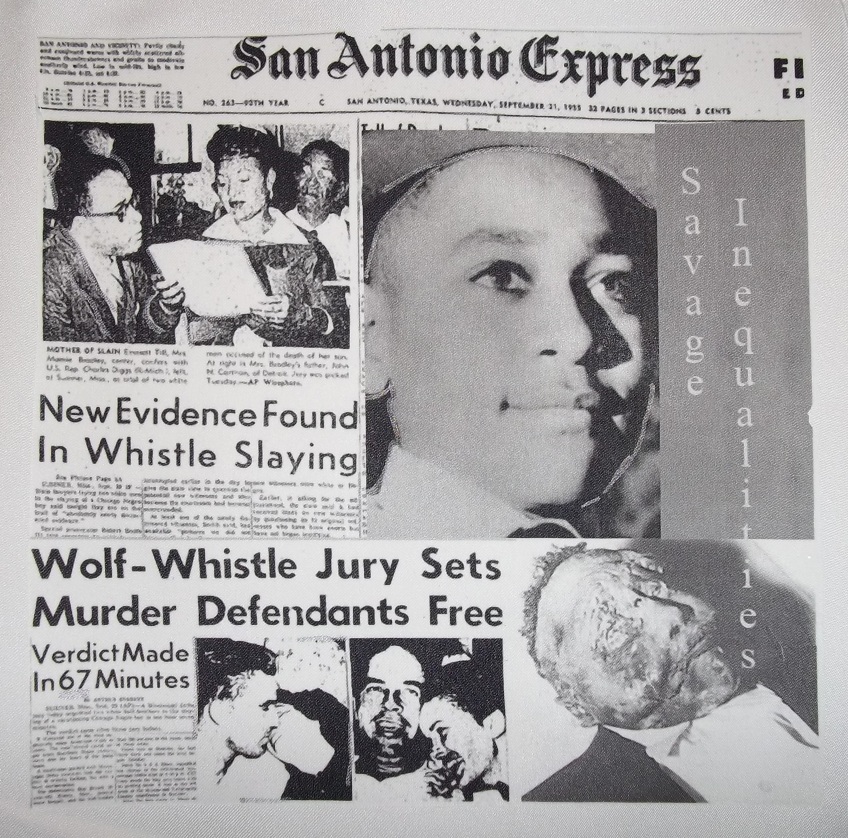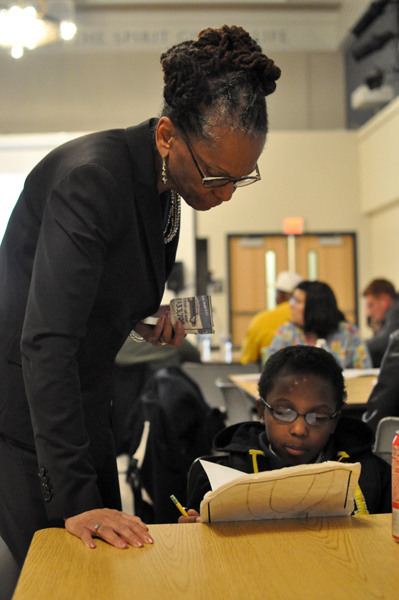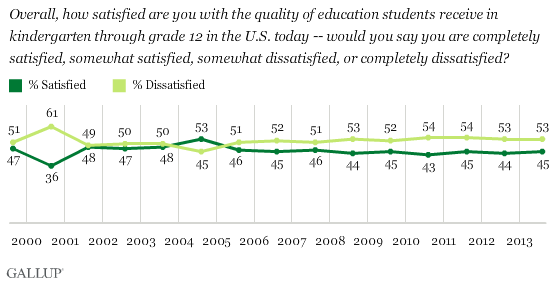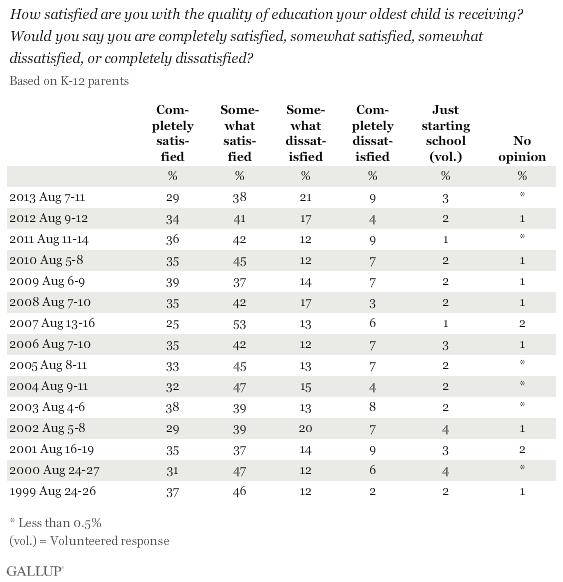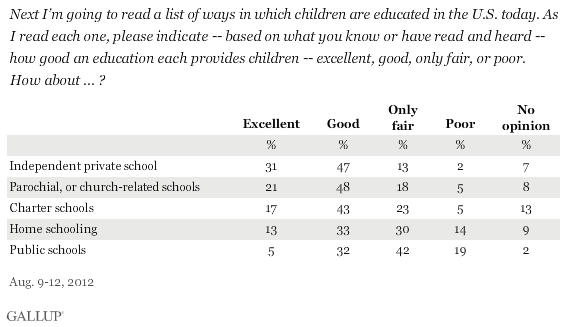When I travel and visit high achieving schools and ask the administrators or the teachers what makes this a School That Works they always respond with a single answer -- it's our culture. Culture is not an easy concept to describe. What is meant by culture? What was the culture of the school you attended?
Here's a definition of school culture from the Glossary of Education Reform.
Over 35 years in public education, I've seen aspects of quality school culture that indicate the values of the administration, teachers, students and parents. Here are a few anecdotes:
These very simple anecdotes reveal attitudes, beliefs and accountability. They reflect school communities where all efforts are focused on support and achievement.
There are a group of inner city schools - public, charter and independent - that are defying the odds and creating high student achievement in Milwaukee, Wisconsin. The schools are all high poverty, high special needs and predominantly students of color. The schools are members of a consortium called Schools That Can - Milwaukee. STC-Milwaukee's goal is to create 20,000 seats of quality education by the year 2020. They are well on their way.
STC-Milwaukee suggests that if you walk into a successful urban school you will see a number of key behaviors. The list of 8 behaviors follows. It provides a roadmap for parents who are looking at their children's school and trying to figure out if they are succeeding. Pittsburgh might be interested to know that there are four Pittsburgh schools who are members of the national STC network and are high achieving based on their criteria. Two are charter and two are private - City Charter High School, Manchester Academic Charter School, The Neighborhood Academy and Pittsburgh Urban Christian School in Wilkinsburg. I would suggest that there are additional Pittsburgh schools that exhibit these behaviors - public, private and charter (public).
Here's a definition of school culture from the Glossary of Education Reform.
Over 35 years in public education, I've seen aspects of quality school culture that indicate the values of the administration, teachers, students and parents. Here are a few anecdotes:
- Every time I walked into East Hills Elementary School I was greeted by the principal - Dick Nicklos - who was always in the front hall available to staff, students, parents and visitors.
- On a visit to Reizenstein Middle School I watched Principal Maxine Klimasara pick up rubbish as we walked through the halls, reprimand a student who was out of dress code, hug another who was doing much improved work, congratulate a teacher on a job well done, manage a cafeteria of over 300 students and calm an angry parent at the front counter.
- I watched Principal Tina Chekan at Propel McKeesport Charter K-8 interact with students in a manner that demanded respect, discipline and hard work. The students positively responding to her very high standards. This resulted in a school, which had one of the highest levels of poverty in the state, attaining the highest achievement in the state on the PSSA.
- I watched teachers at Peabody High school take ownership of their hallways and demand that their colleagues (including me) help enforce a culture of students and staff being on time, acting respectfully and achieving at a very high level.
- At Fulton Elementary School, I watched Vonnie Holbrook, an intermediate mathematics teacher/coach work with the entire staff to improve mathematics achievement at the school and succeed.
- I watched teachers, administrators and social workers at City Charter High School look at extreme student behaviors, not as a deficit or a reason to be punished, but as an indicator that the child needed their support, encouragement and love.
- After an altercation in a high school cafeteria, I saw 30 students volunteer to help the staff clean up the room, put the furniture back in place and make sure the room and its occupants were safe.
- As a result of looping with the same teachers for four years, I observe City Charter High School's graduation where the entire senior class walks silently across the stage to obtain their diploma and hugs each of their teachers and administrators. Everyone is crying. Everyone is bursting with pride.
- I met a very small, young, compelling 2nd grader at a turnaround charter school in Milwaukee. The school was one of the lowest achieving public schools in Milwaukee. The school was turned over to a local charter organization to run. In the two years since being turned over the school was making huge gains in achievement. It had an extremely charismatic principal and engaged staff. Here was my discussion with the young 2nd grader I randomly met in the hallway:
Me - Hello young man. My name is Dr. Wertheimer and I'm visiting your school today from Pittsburgh, PA.
Student - Hello.. my name is _______ (we shake hands).
Me - I notice that you have a book in your hands. Are you a good reader?
Student - (pulls paper out of top pocket). I have my most recent reading scores right here. I'm reading at a 3.4 level and I'm only in second grade. That tells me I'm a good reader.
Me - That's great... you should be very proud. So what book are you reading?
Student - It's called ___________________.
Me - What's it about?
Student: You can learn what a book is about by reading the back cover or the inside sleeve. Here, you can find out for yourself (hands me the book... I was quickly learning that this young man was quite a character).
Me - Seems like an interesting book. Also as I look through it, it seems like it is challenging with some difficult vocabulary. Would you mind reading this paragraph out loud to me?
Student: OK... (reads the paragraph fluently).
Me: - So what does it mean?
Student: It means (student provides the correct meaning of the text).
Me: That's great. There were a few really hard words in the text. Do you really know what they mean?
Student: Here is what that word means. What you're supposed to do is use your context clues. They will help you define the word.What an amazing young man. At the age of 7 he is becoming an empowered, confident reader. His interaction with me suggests he is becoming a critical thinker and clearly, building his self-confidence. His academic presence is a result of becoming empowered by a school that sees no limits to his learning. To turn around a school this quickly necessitates creating a new, all encompassing, culture of success.
These very simple anecdotes reveal attitudes, beliefs and accountability. They reflect school communities where all efforts are focused on support and achievement.
There are a group of inner city schools - public, charter and independent - that are defying the odds and creating high student achievement in Milwaukee, Wisconsin. The schools are all high poverty, high special needs and predominantly students of color. The schools are members of a consortium called Schools That Can - Milwaukee. STC-Milwaukee's goal is to create 20,000 seats of quality education by the year 2020. They are well on their way.
STC-Milwaukee suggests that if you walk into a successful urban school you will see a number of key behaviors. The list of 8 behaviors follows. It provides a roadmap for parents who are looking at their children's school and trying to figure out if they are succeeding. Pittsburgh might be interested to know that there are four Pittsburgh schools who are members of the national STC network and are high achieving based on their criteria. Two are charter and two are private - City Charter High School, Manchester Academic Charter School, The Neighborhood Academy and Pittsburgh Urban Christian School in Wilkinsburg. I would suggest that there are additional Pittsburgh schools that exhibit these behaviors - public, private and charter (public).
1. Teachers Are Intensely Committed to Student Success - Teachers are prepared with dynamic, powerful lessons within their classrooms and are expert at classroom management and instructional methodology. There is a constant focus on student learning throughout the school, and teachers work collaboratively and reflectively to deliver excellence in the classroom.
2. Time on Task - The academic day includes a minimum of 90 minutes of mathematics and 90 minutes of English Language Arts instruction. The school calendar and day are often extended. Students are expected to be on task at all the time.
3. Sweat the Details – Students must comply with the following:
○ Be on time for school and class - Leaders and teachers relentlessly enforce punctuality and take issue with any tardy for any reason. Tardiness is clearly defined.
○ Comply with school dress code - Leaders and teachers relentlessly enforce dress code and uniform requirements, paying attention to the smallest detail, including color of socks, non-white undershirts, or style of shoe.
○ Complete all homework daily.
○ Be silent when others are speaking.
○ Students are on task and engaged in academic work at all times especially when teachers, leaders, or peers request it.
○ Sit up or stand in a respectful and appropriate manner.
○ Refrain from “tisking,” “eye rolling,” or any verbal or non-verbal disrespect of teachers.
The school has a consistent and diligent system in place to positively reward students who follow these expectations and to enforce consequences when expectations are not met.
4. Focus on Student Performance Data - Leaders and teachers regularly use data to review student progress and to drive instructional decisions for individual students, both on the micro level with daily checks for understanding and on the macro level with interim assessments. Leaders and teachers accept responsibility for student achievement and are persistently designing new ways to support students who are not reaching benchmarks and challenge those students who are.
5. Academic Intensity - As schools institute the 90 minutes per day of mathematics and ELA, they incorporate a more intense academic approach geared toward dramatically moving students academically. Regardless of the age of the students, there is an intensely rigorous approach to academics driving students to achieve above grade level, no excuses. School leaders and teachers are relentlessly committed to achieving dramatic academic gains with their students and constantly agonize over results.
6. Joy - The school is filled with thematic motivational signs and slogans; teachers and school leaders use chants, poetry, recitation, singing, and other tools to bring a sense of joy to the learning process. School-wide management tools are used to positively frame expectations. Teachers and students are happy to be at school. Students are taught that the pursuit of academic success and success in life, while not always easy, is a joyful process. During the school day, teachers smile and regularly direct appropriate expressions of love and kindness toward students.
7. Student Attendance - All attendance is taken and recorded in the school office within 60 minutes of the start of the school day. When a student is absent, the absence is challenged. All school office personnel and leadership team members share this mentality. Unless the illness is severe, a student must be in school. If there has been no notification to the school, the school leadership team takes action to get the student to school.
8. Alumni are Tracked - Leaders intentionalize the process of tracking 100% of the school’s alumni as a measure of the school’s success and as a means for offering students continued support through high school into college.
If I were to add one additional behavior of a quality urban school it would be Communication.
9. Communication - This refers to open, transparent, respectful and honest communication between School/Parents, Administrators/Staff and Teachers/Students.Notice that this list of behaviors is not overly sophisticated, it is based in common sense, and years of experience. Schools that succeed are those that focus all energies on the success of students. They do so by hard work, attention to detail, strong discipline, focus on data and creating a culture of success.
Can you imagine that they would include JOY on their list? Quality schools are happy and secure places because they are safe, supportive and successful. Please note that these three adjectives are applied to all the people in the school community - parents, students and staff.
You should visit your neighborhood school. When you walk into the school look around you. Look at the interactions, the environment, the facility and the demeanor of staff and students. See what the focus appears to be... is it on achievement, sports, discipline, extracurriculars or nothing in particular. Is it welcoming? Is it caring? Do the demeanors of the adults appear positive or punitive? Visit a classroom. See if all the students are engaged in learning. Are they all participating? Is the lesson creative, challenging and interactive? Or does the lesson consist of basic skills, rote learning and you notice students with their heads down. You will quickly see whether the school's focus is on student excellence. You will quickly see whether it has a culture of success. This is what leads to a School That Works.
You should visit your neighborhood school. When you walk into the school look around you. Look at the interactions, the environment, the facility and the demeanor of staff and students. See what the focus appears to be... is it on achievement, sports, discipline, extracurriculars or nothing in particular. Is it welcoming? Is it caring? Do the demeanors of the adults appear positive or punitive? Visit a classroom. See if all the students are engaged in learning. Are they all participating? Is the lesson creative, challenging and interactive? Or does the lesson consist of basic skills, rote learning and you notice students with their heads down. You will quickly see whether the school's focus is on student excellence. You will quickly see whether it has a culture of success. This is what leads to a School That Works.
In my next post, I will talk about how we measure success and determine whether a school is a high achieving school or not.

